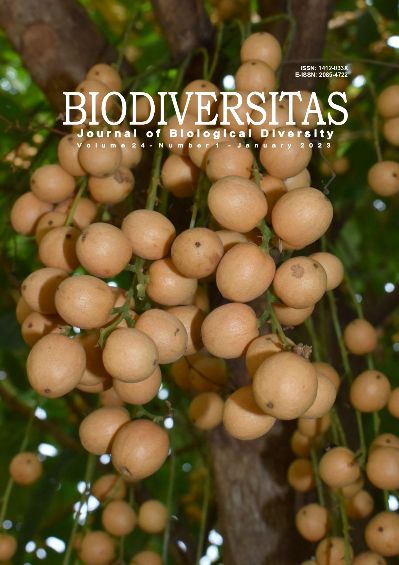Cultivation of underutilized fruit trees by indigenous people in Urug Village, West Java, Indonesia
##plugins.themes.bootstrap3.article.main##
Abstract
Abstract. Anggraeni A, Yuniati R, Silalahi M, Lestari R, Jumari. 2023. Cultivation of underutilized fruit trees by indigenous people in Urug Village, West Java, Indonesia. Biodiversitas 24: 454-466. Underutilized Fruit Trees (UFTs) are a group of fruit trees with high potential but underutilized. Some fruit has been identified in Urug Village, but this village was hit by a natural disaster, i.e., a flood and landslide in early 2020 that damaged the location where UFTs grew, threatening the existence of UFTs genetic resources. Therefore, a systematic and integrated effort is needed to maintain UFTs biodiversity. This study aims to discover how to cultivate UFTs by the indigenous peoples in Urug Village, document the location where UFTs grow, and analyze index vegetation using the Normalized Difference Vegetation Index (NDVI). Using the combined method of Focus Group Discussion (FGD) with 16 indigenous people, in-depth interviews with 19 indigenous people, and field observations, this study shows that there are 53 individuals of UFTs from 13 species found in several areas in Urug Village. Indigenous people have a unique way of cultivating UFT, starting from tree selection, preparation of planting sites, tree planting, and fruit tree care. However, more than 60% of UFT was found in the moderate vegetation index. The challenges of UFTs cultivation in Urug Village are changes in fruit consumption patterns, degradation of local knowledge, lack of information about the nutritional and vitamin content of UFTs, land use change, climate change, and the low involvement of both central and regional governments in cultivating UFTs. Thus, changes in consumer and government perceptions, and increased research on UFT are needed to address the challenges of cultivating UFT.

